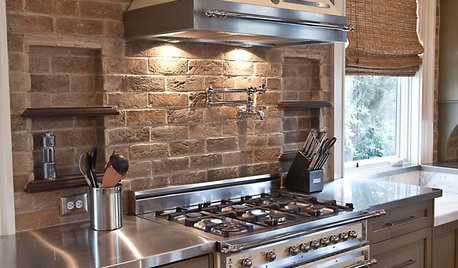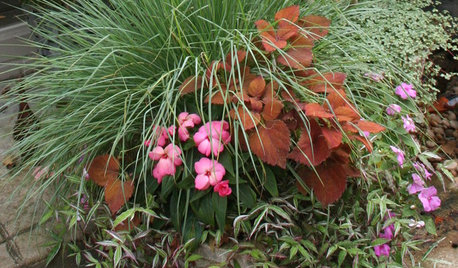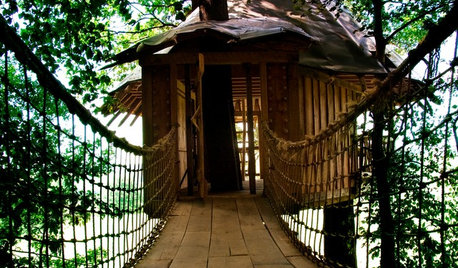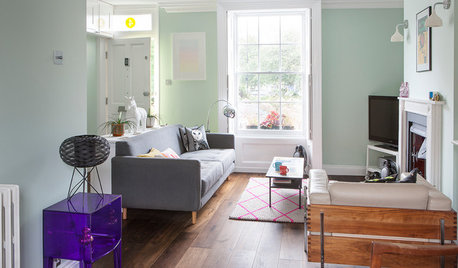Can bleach be used to sterilize potting mix?
Oklahoma_Tim
14 years ago
Related Stories

KITCHEN DESIGNYes, You Can Use Brick in the Kitchen
Quell your fears of cooking splashes, cleaning nightmares and dust with these tips from the pros
Full Story
HOUZZ TOURSMy Houzz: Mixed-Use Oregon Home Serves and Charms
Home, restaurant, garden, rental cabin — and it gives back to the community too. This multitasking home is a wonder in more ways than one
Full Story
DECORATING GUIDESDecorating 101: How to Use White Right
If you’ve ever been in white-paint-swatch limbo, you know white can be tricky to work with. Here’s how to get the fresh look you’re after
Full Story
KITCHEN DESIGNTrending Now: 25 Kitchen Photos Houzzers Can’t Get Enough Of
Use the kitchens that have been added to the most ideabooks in the last few months to inspire your dream project
Full Story
CONTAINER GARDENSContainer Garden Basics: Mix Textures to Catch the Eye
A mix of textures makes for potted gardens where each plant has a special role to play
Full Story
FALL GARDENING5 Fall Fruits You Can Grow in Containers
Brighten your porch or patio with a potted pomegranate, kumquat, blueberry bush or another great fall fruit
Full Story
OUTBUILDINGS12 Fun Backyard Forts Grown-Ups Can Love, Too
Kids might use them for secret meetings, but the word is out on these tree houses and playhouses that consider adult design tastes
Full Story
KITCHEN DESIGNNew This Week: 2 Kitchens That Show How to Mix Materials
See how these kitchens combine textures, colors and materials into a harmonious whole
Full Story
KITCHEN DESIGNThe Cure for Houzz Envy: Kitchen Touches Anyone Can Do
Take your kitchen up a notch even if it will never reach top-of-the-line, with these cheap and easy decorating ideas
Full Story
ECLECTIC HOMESHouzz Tour: High-Low Mix in a Colorful Victorian
An unloved house is transformed into a cheerful, versatile home with a blend of design classics, budget pieces and treasured finds
Full Story








Mentha
tapla (mid-Michigan, USDA z5b-6a)
Related Professionals
Chattanooga Landscape Architects & Landscape Designers · East Rancho Dominguez Landscape Architects & Landscape Designers · Port Royal Landscape Architects & Landscape Designers · South Elgin Landscape Architects & Landscape Designers · Woodinville Landscape Architects & Landscape Designers · Concord Landscape Contractors · Battle Ground Landscape Contractors · Centereach Landscape Contractors · Florham Park Landscape Contractors · Fort Mill Landscape Contractors · Goodlettsville Landscape Contractors · Huntley Landscape Contractors · Oklahoma City Landscape Contractors · South Portland Landscape Contractors · Oxon Hill Landscape ContractorsOklahoma_TimOriginal Author
albert_135 39.17°N 119.76°W 4695ft.
larry_b
larry_b
Oklahoma_TimOriginal Author
larry_b
rmpara_hotmail_com
MojaveLove
jane__ny
dellis326 (Danny)
User
albert_135 39.17°N 119.76°W 4695ft.
magentamsi
hexalm
rhizo_1 (North AL) zone 7
tapla (mid-Michigan, USDA z5b-6a)